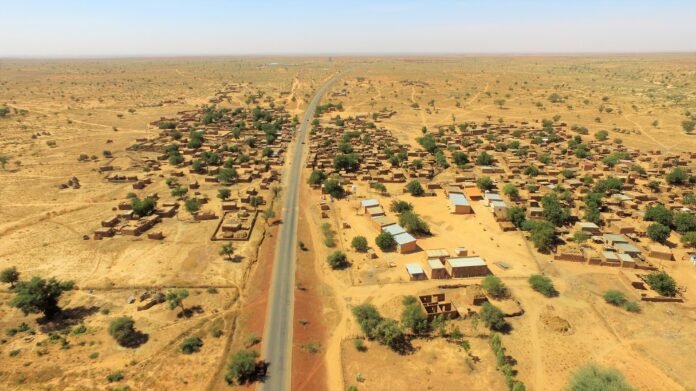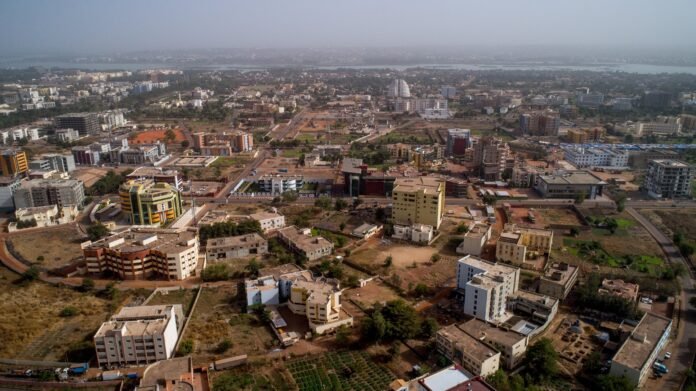Niger’s health insurance landscape is characterized by a predominantly public sector system striving toward universal health coverage (UHC), alongside a nascent and limited private health insurance market. Both sectors face significant challenges due to the country’s economic constraints, humanitarian crises, and underdeveloped healthcare infrastructure. Despite these challenges, there are key differences and some similarities between the two.
Differences
1. Coverage and Target Population
Public health insurance and financing efforts in Niger primarily focus on vulnerable populations, including women, children, and the rural poor. Services are often free or heavily subsidized in public facilities, with an emphasis on maternal and child health to combat some of the highest mortality rates globally. Community-Based Health Insurance (CBHI) schemes target informal and rural sectors to reduce out-of-pocket payments and expand coverage gradually.
Conversely, private health insurance mainly serves the urban formal sector workforce, wealthier individuals, and expatriates. Private plans generally require premium payments, which limits access for lower-income and rural populations. Private insurers also provide specialized and inpatient coverage, often linked to employer-sponsored plans or international policies, particularly for expatriates.
2. Funding Mechanisms
Public health insurance in Niger is funded predominantly through government budgets supplemented by donor funding and international partnerships. Many public health services, especially primary care and essential treatments, are free at the point of service or subsidized to maximize accessibility.
In contrast, private health insurance relies on premium-based payments from individuals or employers. This makes private insurance more financially sustainable but less accessible for the average Nigerien, given the country’s widespread poverty. Private schemes also sometimes incorporate third-party administrators to manage claims and provider networks.
3. Access to Services and Facilities
Public insurance primarily grants access to public hospitals and clinics, whose capacity is often constrained by regional instability, infrastructure shortages, and humanitarian crises, particularly in conflict-prone areas like Tillabéri and Diffa.
Private insurance, meanwhile, provides access to private clinics and hospitals predominantly located in urban centers like Niamey. These facilities offer higher quality and more specialized services, but at significantly higher costs, limiting use mainly to insured and wealthier populations.
4. Market Size and Development
The public health insurance market in Niger remains small but growing due to government-led reforms and donor-supported initiatives aimed at expanding social health protection. Community-based schemes, although limited in scale, are key to this expansion.
Private health insurance is in an earlier stage of development, with a small but gradually increasing market. Awareness and penetration are low, and the sector is largely concentrated among employers and expatriates.
Similarities
Despite differences, public and private health insurance in Niger share some common features:
- Focus on Reducing Financial Barriers: Both sectors aim to reduce the financial burden of healthcare—public through subsidization and free services, private through risk pooling via premiums and employer benefits.
- Limited Coverage and Penetration: Both public and private insurance schemes have limited reach, with large portions of the population still reliant on out-of-pocket payments due to system constraints.
- Challenges in Healthcare Infrastructure: Both sectors contend with the country’s underdeveloped healthcare infrastructure, although private facilities tend to be better equipped.
- Importance of External Support: Both public and private health insurance developments are influenced by donor and international support, especially as Niger works toward UHC.
Top Public Health Insurance and Health Financing Options in Niger
Niger’s public health insurance and financing landscape is unique, shaped by the country’s commitment to universal health coverage (UHC) amid significant economic and humanitarian challenges. The public sector’s health financing mechanisms aim to provide affordable and accessible healthcare to vulnerable populations, although coverage remains limited overall. Below are the top public health insurance schemes and government-backed health financing options currently available:
1. Government-Funded Public Health Services(Official Website: https://cnss.ne/)
Cost:
Public health services are primarily funded through government budgets and substantial donor support, allowing many essential services to be offered free or at minimal cost, especially for maternal and child healthcare.
Coverage and Services:
Coverage focuses on primary healthcare, maternal and child health, vaccinations, and treatment for common illnesses. Services are delivered through public hospitals, health centers, and clinics across Niger, though infrastructure varies widely by region.
Accessibility:
Open broadly to the entire population, but actual access is uneven, especially in rural and conflict-affected areas such as Tillabéri and Diffa, where health facility availability is limited.
Financial Features:
Funded largely through public taxation and international aid. Patients typically face no direct premium payments for essential services but may incur some out-of-pocket costs for non-covered treatments or medicines.
Consumer Satisfaction:
Satisfaction is mixed, constrained by inconsistent availability of medicines, understaffing, and regional disparities in service quality.
2. Community-Based Health Insurance (CBHI) Schemes(Official Website: https://msae-niger.org/)
Cost:
Voluntary insurance schemes with low premiums tailored to informal and rural populations. Premiums vary but are designed to be affordable within local income levels.
Coverage and Services:
CBHI schemes cover basic outpatient care, maternal health services, and some inpatient care at local health facilities participating in the program.
Accessibility:
Limited but expanding. Open to members of specific communities or cooperatives, making coverage somewhat restricted by geography and enrollment efforts.
Financial Features:
Premium contributions pooled to reduce catastrophic out-of-pocket expenses. Often subsidized by the government and international donors to encourage uptake.
Consumer Satisfaction:
Generally positive among enrollees who benefit from reduced costs, but overall enrollment rates remain low due to awareness and trust issues.
3. Basic Health Care Provision Fund
Cost:
Funded by the government and external donors, this fund supports free or highly subsidized care for indigent populations.
Coverage and Services:
Focuses on primary healthcare services including preventive care, maternal and child health, and emergency treatments.
Accessibility:
Targeted at the poorest and most vulnerable groups across Niger, with priority in underserved rural and crisis-affected regions.
Financial Features:
No premiums charged to beneficiaries; financed through social protection budgets and international grants.
Consumer Satisfaction:
Positive among beneficiaries, though limited by the scale and reach of available funding.
4. Social Health Protection Programs
Cost:
These programs offer subsidized or free healthcare services funded through government social protection budgets.
Coverage and Services:
Includes health care for vulnerable groups such as pregnant women, children under five, and persons with disabilities.
Accessibility:
Open to targeted populations nationwide, but logistical and infrastructural challenges affect delivery, especially outside major urban centers.
Financial Features:
No direct cost to beneficiaries, relying on public funds and donor contributions.
Consumer Satisfaction:
Generally favorable within target groups, though constrained by healthcare system capacity.
5. Providing for Health (P4H) Initiative
Cost:
No direct costs to patients; funded by a coalition of international donors supporting Niger’s health financing reforms.
Coverage and Services:
Supports expansion of social health insurance schemes and improves coordination among health actors, aiming to extend coverage and improve service quality.
Accessibility:
Focuses on scaling up coverage nationwide, including informal sector and rural populations.
Financial Features:
Provides technical and financial support to reduce fragmentation of health financing and promote sustainability.
Consumer Satisfaction:
Positive feedback from stakeholders on system improvements, though impact on individual consumers is still emerging.
Top Private Health Insurance Providers in Niger
Niger’s private health insurance sector is relatively small but growing, primarily serving urban populations, formal sector employees, and expatriates. The private market offers more comprehensive and flexible coverage compared to public schemes but remains limited by the country’s economic conditions and low overall insurance penetration. Below are the leading private health insurance providers and initiatives currently active in Niger:
1. Niger Assurance Santé (NAS)(Official Website: https://www.facebook.com/NigerLife/)
Cost:
Premiums vary based on plan type, typically starting from moderate monthly payments affordable mainly by middle to upper-income urban clients and formal sector employees.
Coverage and Services:
Offers comprehensive coverage including inpatient and outpatient care, specialist consultations, diagnostic services, and emergency care. Some plans include access to private clinics and hospitals.
Accessibility:
Open primarily to formal sector workers and individuals in urban areas, with limited reach in rural regions.
Financial Features:
Premium-based private insurance with co-payment options; offers flexibility in plan selection and additional rider options for enhanced coverage.
Consumer Satisfaction:
Moderate to high satisfaction among enrolled clients, who appreciate quicker access to private healthcare and broader provider choice.
2. Assurance Santé Niger (ASN)(Official Website: https://caren-niger.com/)
Cost:
Premium levels tailored to corporate clients and individuals, generally mid-range but affordable to urban professionals and companies offering employee benefits.
Coverage and Services:
Covers hospitalization, outpatient visits, maternity care, and preventive services. Includes partnerships with select private hospitals and diagnostic centers.
Accessibility:
Mainly available to corporate clients and formal sector employees; individual plans are limited but offered.
Financial Features:
Primarily premium-funded with options for employer-sponsored plans, co-payments, and deductibles depending on plan specifics.
Consumer Satisfaction:
Positive feedback for customer service and claim processing times, though overall market penetration remains modest.
3. Mutuelle Santé Citoyenne (MSC)
Cost:
Community-based private mutual insurance with affordable premiums designed for urban informal sector workers and civil servants.
Coverage and Services:
Basic coverage focusing on primary care, maternity services, and outpatient treatment, often in collaboration with select clinics.
Accessibility:
Open to a wide range of individuals including informal workers, but requires membership and premium payment.
Financial Features:
Premium contributions pooled to mitigate healthcare costs; offers cost-sharing mechanisms to reduce financial burden on members.
Consumer Satisfaction:
Generally positive among members, especially for outpatient care access, though limited by service scope.
4. International Health Insurance Providers
Cost:
Higher premiums reflecting international standards, typically affordable only to expatriates, diplomats, and NGOs operating in Niger.
Coverage and Services:
Comprehensive global coverage including medical evacuation, specialist care, hospitalization, outpatient care, and repatriation.
Accessibility:
Open only to expatriates, foreign employees, and international organizations.
Financial Features:
Premium-based with high coverage limits and extensive benefits, including emergency evacuation services often lacking locally.
Consumer Satisfaction:
High satisfaction among expatriates due to quality of coverage and international network access.
5. Private Employer-Based Health Plans
Cost:
Costs vary widely depending on employer size and sector; generally affordable as part of employee benefit packages.
Coverage and Services:
Coverage often includes access to private clinics, hospitalization, outpatient care, and preventive health programs tailored to employee needs.
Accessibility:
Limited to employees of larger corporations, government institutions, and NGOs.
Financial Features:
Funded through employer contributions with some employee co-payments or deductibles.
Consumer Satisfaction:
Positive among employees with access, though coverage is not universal and depends on employer policies.
READ MORE: Private and public health insurance of Montenegro (Make informed choices)


